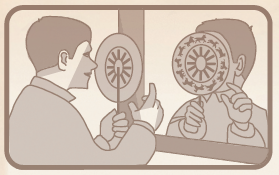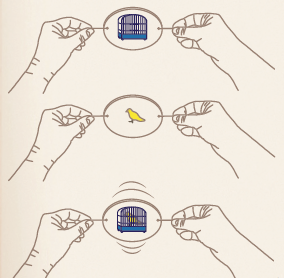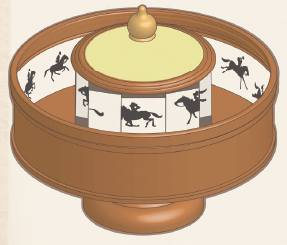Animation before the invention of film
Some of the very first inventions that simulated movement by tricking our eyes.
Although this may come as a surprise to some, the animation industry was once a field dominated by mathematicians and physicists. Rather than attracting purely creative minds, logical brains developed these innovative contraptions – with many basing their research on the work of Michael Faraday and Sir Isaac Newton. The goal of these scientists and inventors was to create the illusion of motion, and they accomplished this goal in intelligent ways. All of their apparatus took advantage of the limits of the human eye, which takes about one-hundredth of a second to process a single image. If we see more than one image in that time, then to us, they seem to blend together with no interruptions. And it was this knowledge, and how to make use of it, which gave rise to the field of animation. By producing a collection of images that slightly differed from each other, and showing them to the human eye in quick succession, the image would appear to come alive and move. And to accomplish this, the inventors took advantage of spinning objects to whirl the images in front of our eyes. Some of these were more complex than others, but they were all based on the same principle. Today, children still make use of a similar toy – the flipbook. We’ve probably all flicked through the pages of one before, and seen a cheetah or a car dash across the pages, and it’s interesting to think that very similar toys were being played with almost 200 years ago.
Phenakistoscopes
This early invention worked by coating a spinning disk with a series of drawings depicting different phases of movement. Another disk with equally spaced slots around its axis and a handle would then be added. The user could spin the disk while facing a mirror, and by looking through the slits they would see the pictures blend into a seemingly moving image.

Thaumatropes
A simple disk or piece of card was attached to two pieces of string, and on the front and reverse of the disk, two different images were drawn. Twirling the card quickly by rolling the string in your fingers would make the images appear to merge together.

Praxinoscopes
The praxinoscope was invented in 1876. A series if stationary mirrors were attached to a central cylinder and these were used to reflect images that had been painted on the inside of a larger cylinder revolving around them. This meant that multiple onlookers could enjoy the ‘moving picture’ in the centre.

For more information about science and technology, visit our website now. If you have a tablet or smartphone, you can also download the latest digital version onto your iOS or Android device. To make sure you never miss an issue of How It Works magazine, subscribe today!
When will video games look like real life?





